Ahead of National Handloom Day tomorrow, enjoy a showreel of lesser-known weaves of Maharashtra, from the Kolivan to the dying Deccan sari
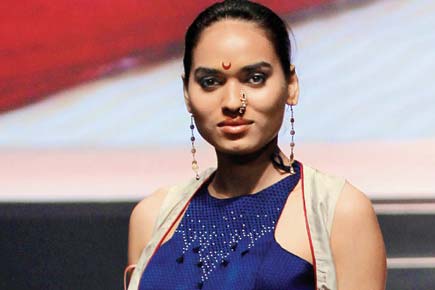
![]() The Solapur sari
The Solapur sari
“There are barely 100 handlooms left in Solapur, I am trying to revive them but it’s difficult to make the Solapur sari consistently as the weavers are not forthcoming. Most are nearing retirement and don’t feel the need to earn since they depend on their wives, a majority of whom are in the beedi-making business,” rues Solapur-based law-yer-turned-designer Vinay Narkar (right), known as much for his Solapur sari creations as his Gadwal weaves.
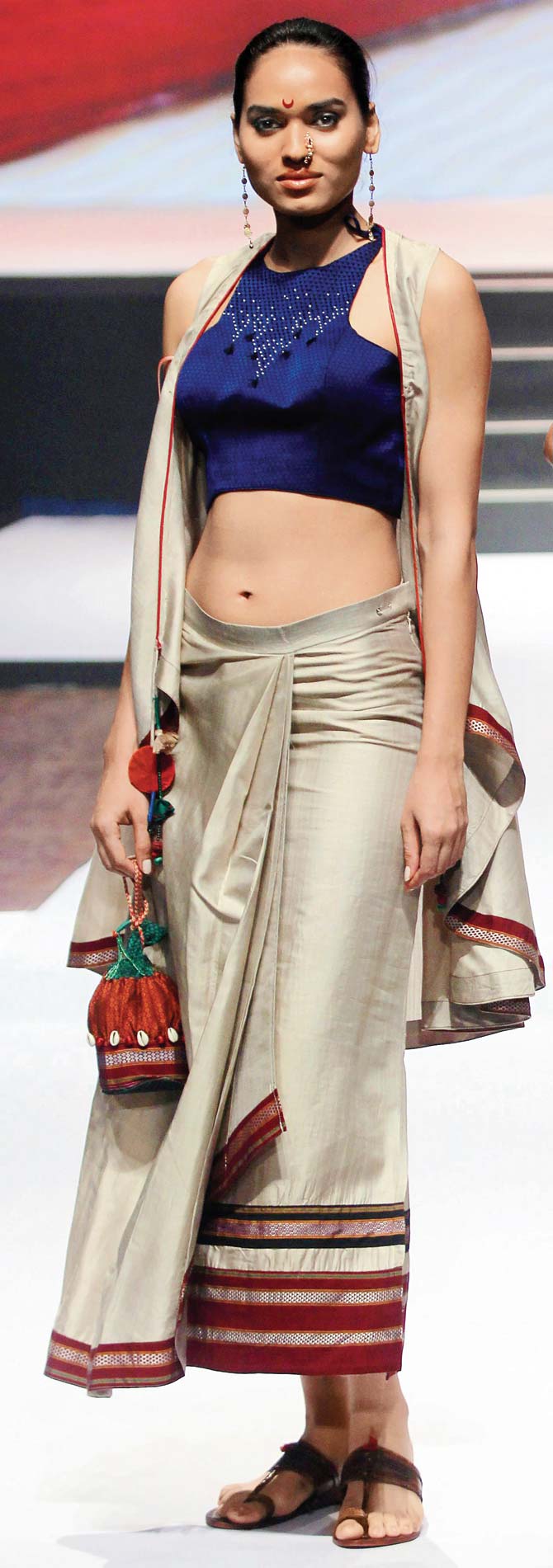 A Kosa silk outfit designed by a NIFT student
A Kosa silk outfit designed by a NIFT student
ADVERTISEMENT
Belonging to South-eastern Maharashtra, the cotton Solapur sari, also called the Deccan sari, is hand-woven using a two-shuttle technique. Created in a stark colour palette featuring reds, blues, purples and browns, it was traditionally a nine-yard wonder, with motifs crafted in the border.
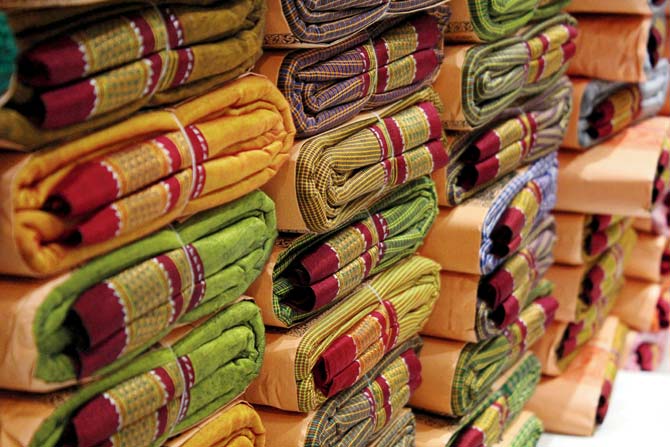
Shelves with Ilkal saris in Solapur
Considering the proximity of the two regions, the sari bears similarities with Ilkal, produced across the border in this town in North Karnataka. Now, on the brink of a fadeout, this sari has been replaced by Ilkal varieties at most shops in Solapur and adjacent areas, though customised according to the taste of the state.
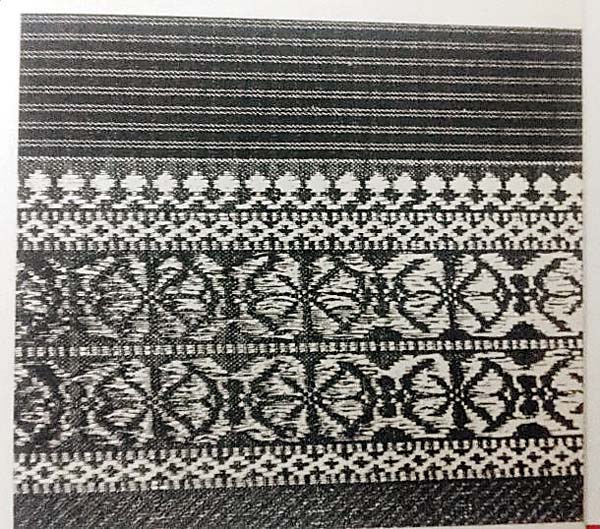
A Solapur sari with the Ruiphool motif from the book, The Sari: History, Pattern, Style, Technique by Linda Lynton
“The checks and motifs are different. While Karnataka Ilkal has a plain body, the Maharashtra version features different types of checks, known as chokda (square checks), duphda (double checks), along with motifs like Ruiphool, Aankh and Karvat (axe),” he adds.

Khun weave
Originating in Maindargi, a town in Solapur district, Khun (a.k.a Khand) is a coarse fabric, mostly woven into a blouse. “It is difficult to find weavers of the original Khun,” says designer Vaishali S, who featured it in three of her collections.
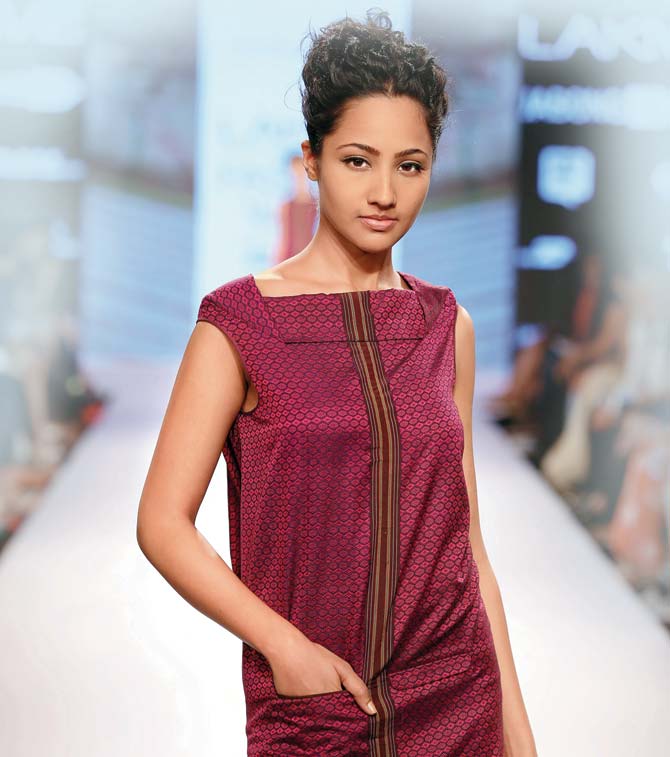
“Khun was used as offering to the goddess and so, you can see the goddess’s face on the borders, along with flowers, and temples. It retains its colour and lustre even after several washes and can be used as a modern silhouette.”
Motifs of Maharashtra
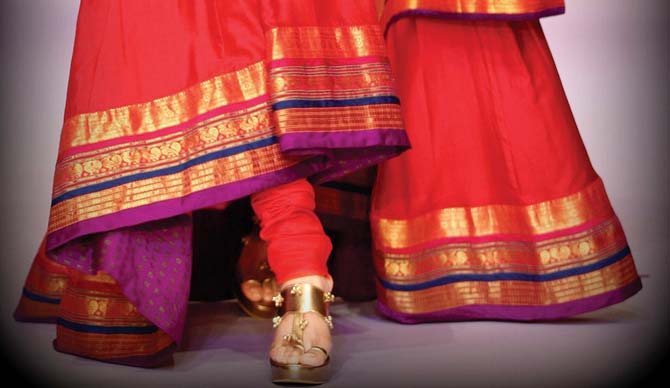 Totapuri or the parrot motif
Totapuri or the parrot motif

Narli (coconut) motifs. Pics courtesy/Shruti Sancheti
 Rasta (parallel lines)
Rasta (parallel lines)
Weaves of Vidarbha
“East and South Maharashtra is rich in weaves, though many are lesser-known. I’m working with weavers to add contemporary design motifs and a better thread count, so they can get global exposure too,” says Nagpur-based designer Shruti Sancheti, the face of Maharashtra State Handloom Corporation. She guides us through different weaves and motifs.
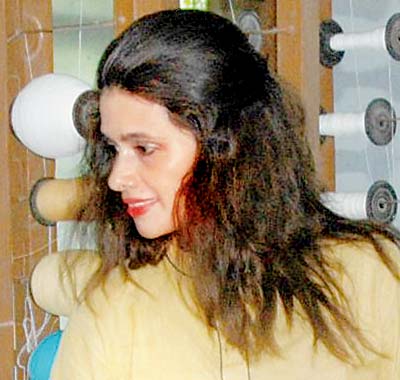
>> Tussar silk: Few might be aware that Tussar silk is also produced in Vidarbha. Unlike other states, Tussar here uses a subdued and dark colour palette.
>> Kosa silk: From Gondia and Bhandara regions, the fabric is woven in vibrant colours, though it doesn’t have the luxurious fall of a Tussar silk.
>> Nagpur checks: Similar to the Solapur checks, the Nagpuri version is woven in a two-colour tone.
>> Narayan Peth: This sari bears resemblance with the Paithani. “It is seen across Maharashtra. It is woven in checks, mainly in silk with temple motifs,” says Sancheti.
The Paithani sari
Produced for over 2,000 years, Paithani sari originates from Paithan near Aurangabad and Yeola near Nashik and it is the most popular Maharastrian weave. Traditionally, it was an essential part of a bride’s trousseau, often woven in silver and gold.

“The Paithani technique is close to the ones of tapestry weaving. Due to proximity to the Ajanta caves, the influence of the Buddhist paintings can be seen in the Paithani motifs,” says Nilima Singh, director of NIFT Mumbai.
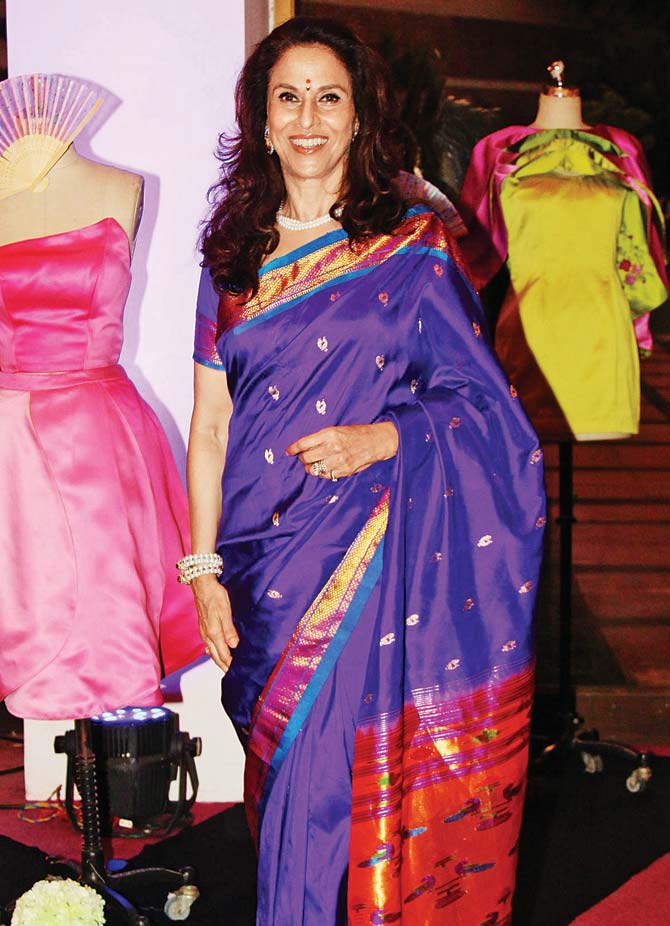 Shobhaa De in a Paithani sari at a NIFT event
Shobhaa De in a Paithani sari at a NIFT event
The most popular motifs include kamal (lotus flower) on which Buddha sits or stands, hans (swan), ashraffi (coin), bangadi mor (peacock in bangle), tota-maina (parrot-mynah), humarparinda (peasant bird), the Amar Vell (a Moghul-inspired design) and Narali (a traditional coconut border), which was the most common Paithani border until the end of 19th century. Small motifs like circles, stars, kuyri, rui phool, kalas pakhhli, chandrakor and clusters of three leaves were common for the body of the sari.
“Paithani also features animal motifs like the peacock, elephants and parrots that are stylised to make attractive patterns. The weaving is intricate. The contrasting colour combinations in the motif with bright colours like pink, green, blue and magenta makes the Paithani stand out,” sums up Singh, whose students and the institute have worked extensively with the weave.
Himroo
Singh believes that the Himroo textiles of Aurangabad are unique. The word Himroo originated from the Persian word Hum-ruh that means similar. Himroo is a replication of Kum-khwab, which was woven with pure golden and silver threads in the olden days, and was meant for the royal families.
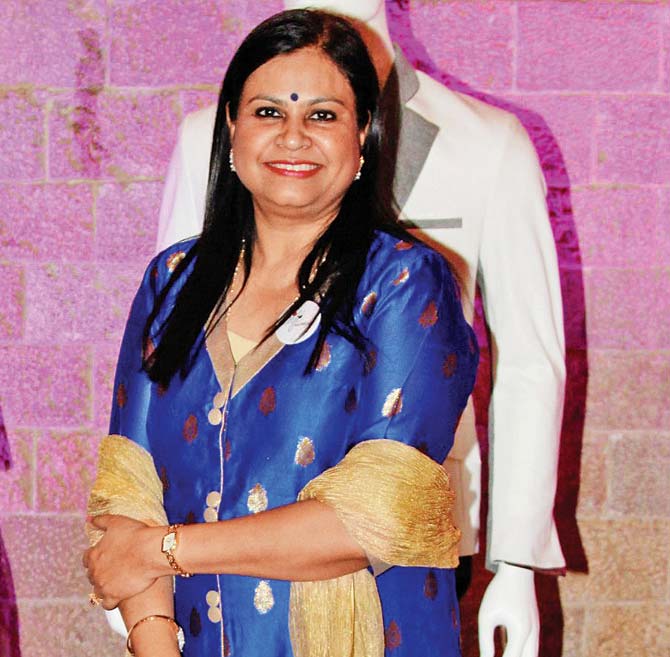 Nilima Singh, director of NIFT, Mumbai
Nilima Singh, director of NIFT, Mumbai
“Himroo uses Persian designs, and is distinctive in appearance. However, some historians believe that Himroo was the innovation of local craftsmen with little Persian influence. In the earlier days, it was made using the brocade techniques of Jaala. Now, the Himroo is largely done on power looms using Jacquard mechanism. Such high is its worth and texture that this fabric is often seen resembling a golden cloth,” shares Singh, adding that, “of the all the weaves, Himroo is lesser known, as the art of making by hand has diminished and few artisans are ready to work on the craft. However some of the power loom versions are now being sold in the market.” Popular motifs from Himroo include decorative ambia (derived from the mango, the stylised form is also known as paisley, globally) and intricate floral patterns inspired from the Moghul architecture.
Kolivan
Apart from the Solapur sari, the region also weaves the traditional attire worn by the Koli fisherfolk in Mumbai. Known as Kolivan (meaning Koli design), the sari is heavier than other versions since it is woven with a regular 60 or 80 thread count. “It is 10 metres in length and mainly, worn by the older generation from the community. A few handlooms in Solapur make the saris, but they add synthetic material to cut costs. I am trying to replace them with cotton and using the weave to construct garments and folders to increase its awareness,” adds Narkar.
 Subscribe today by clicking the link and stay updated with the latest news!" Click here!
Subscribe today by clicking the link and stay updated with the latest news!" Click here!







